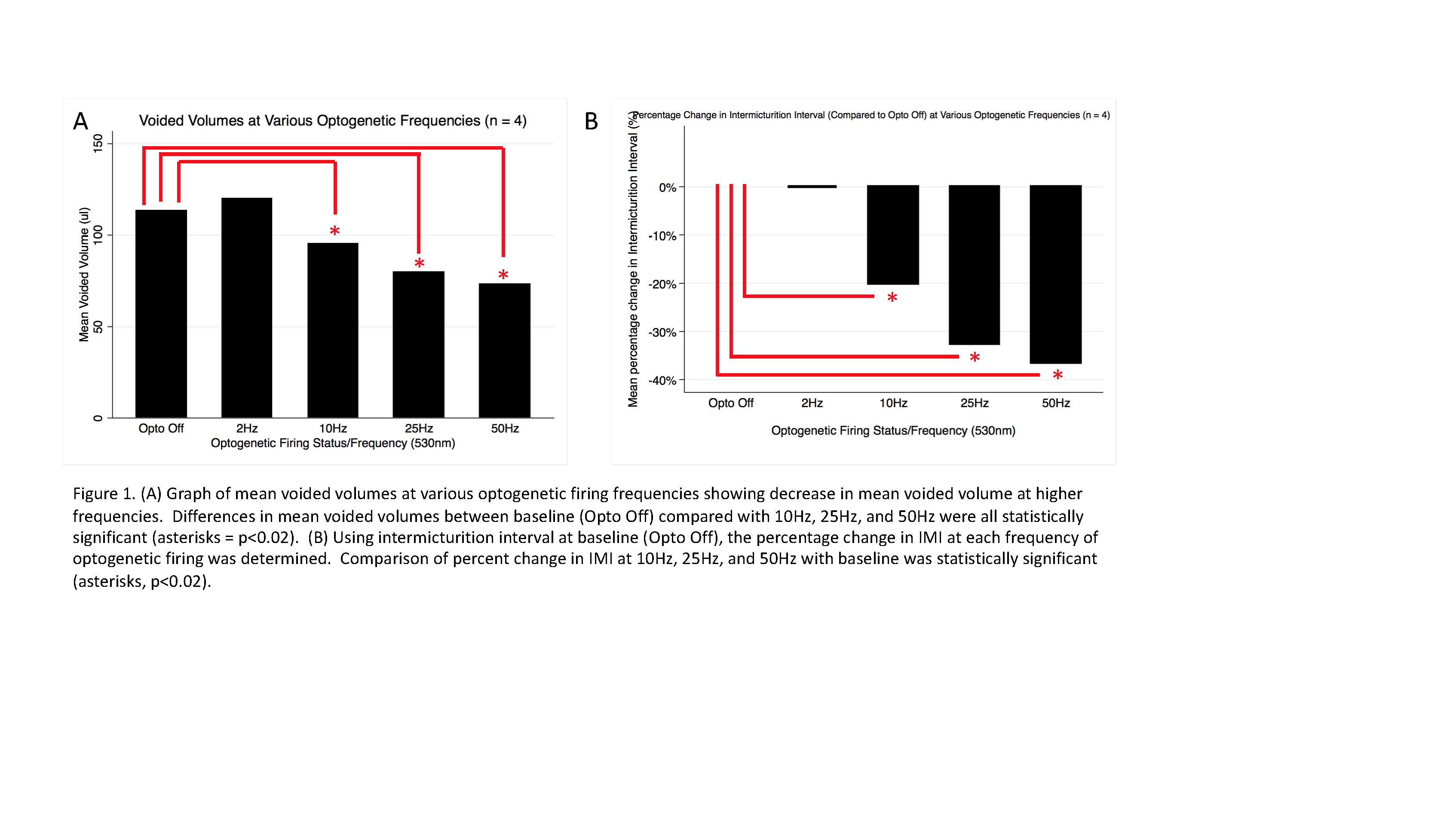Optogenetic Inhibition of Neurons Expressing Corticotropin-Releasing Hormone in Barrington’s Nucleus Facilitates Micturition
Jason P. Van Batavia, MD1, Stephan Butler, MS1, Joanna Fesi, BA1, Stefano Vicini, PhD2, Stephen A. Zderic, MD1.
1The Children's Hospital of Philadelphia, Philadelphia, PA, USA, 2Georgetown University, Washington DC, DC, USA.
BACKGROUND: Lower urinary tract dysfunction (LUTD) affect 20% of “normal” children and >40% of adults over the age of 40. The neuro-urologic pathways involved in normal and dysfunctional voiding are largely unknown and recent interest has focused on neurons that express corticotropin-releasing hormone (CRH) in Barrington’s nucleus (BN), the pontine micturition center. A recent optogenetic study provided evidence for a role of these specific BN neurons in micturition (Hou et al, Cell 2016; 167:73) and we previously presented our work showing that stimulation of these neurons inhibits micturition. Here we examine the effects of optogenetic inhibition of these CRH neurons in BN on the in vivo voiding phenotype and urodynamics in awake mice. We hypothesized that inhibiting these neurons would lead to facilitation of voiding with smaller voided volumes and shorter time between voids.
METHODS: Double transgenic male mice expressing archaerhodopsin channel (ArchRd) in CRH cells had fiberoptic probes implanted into BN at 8 weeks of age and a catheter secured into the bladder for in vivo cystometry. In vivo cystometry before and during optogenetic inhibition at various frequencies was performed 5 days postoperatively. Saline was perfused at 10µl/min and baseline stable voiding cycles were established.
RESULTS: Optogenetic silencing (530 nm at 10, 25 and 50 Hz) of CRH neurons in BN produced a significant decrease in intermicturition interval (time between voids), bladder capacities and voided volumes (Figure 1). Control non double mice showed no effects from optogenetic stimulation.
CONCLUSIONS: Our results suggest that optogenetic silencing of CRH-BN neurons at high frequencies elicits bladder contractions and facilitates micturition leading to a voiding phenotype of more frequent and small volumes voids. Further elucidation of the heterogeneous population of neurons in BN are warranted to understand micturition and how it may be manipulated in disease states such as in patients with infrequent voiding or acute urinary retention. 
Back to 2018 Program




